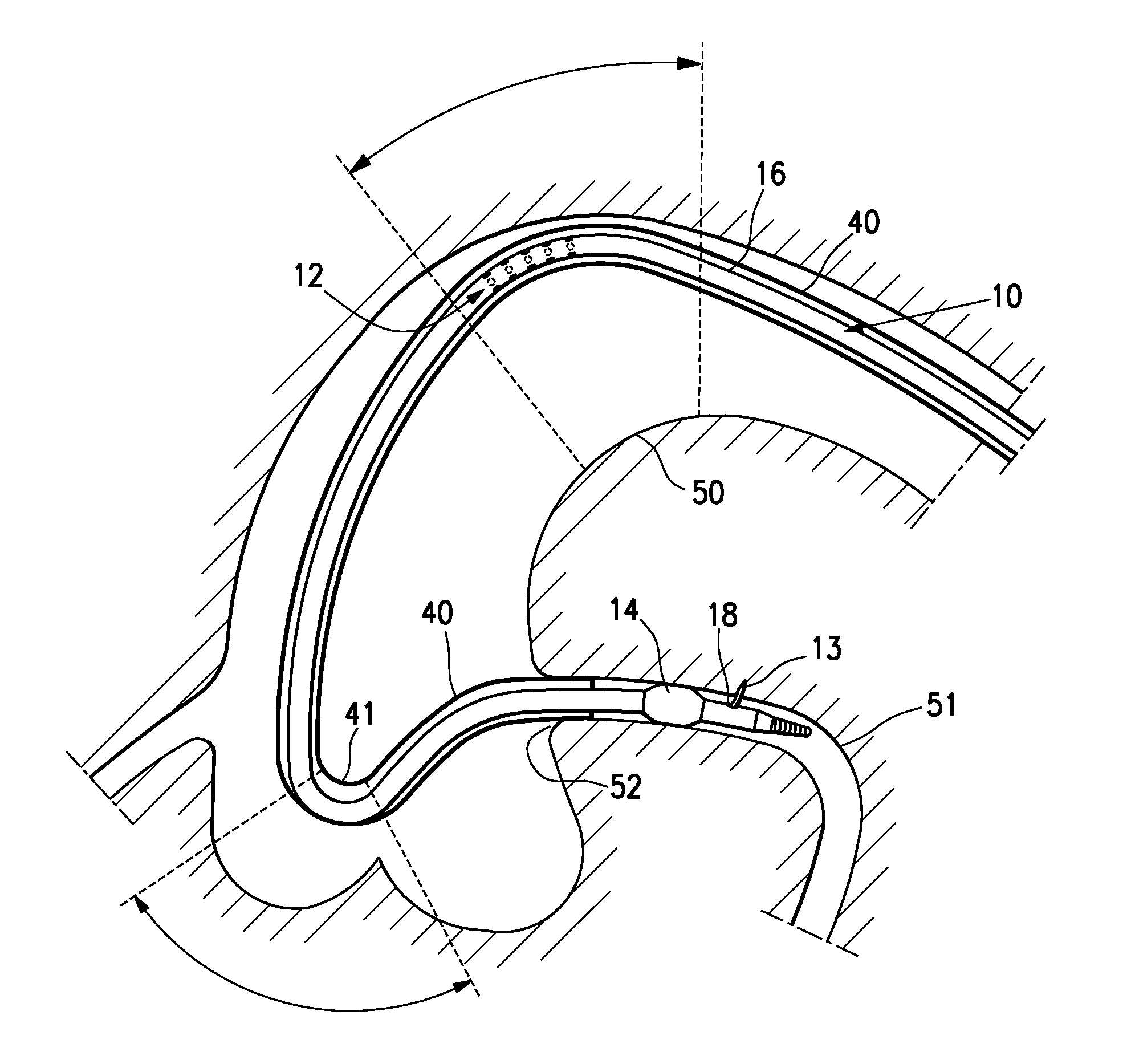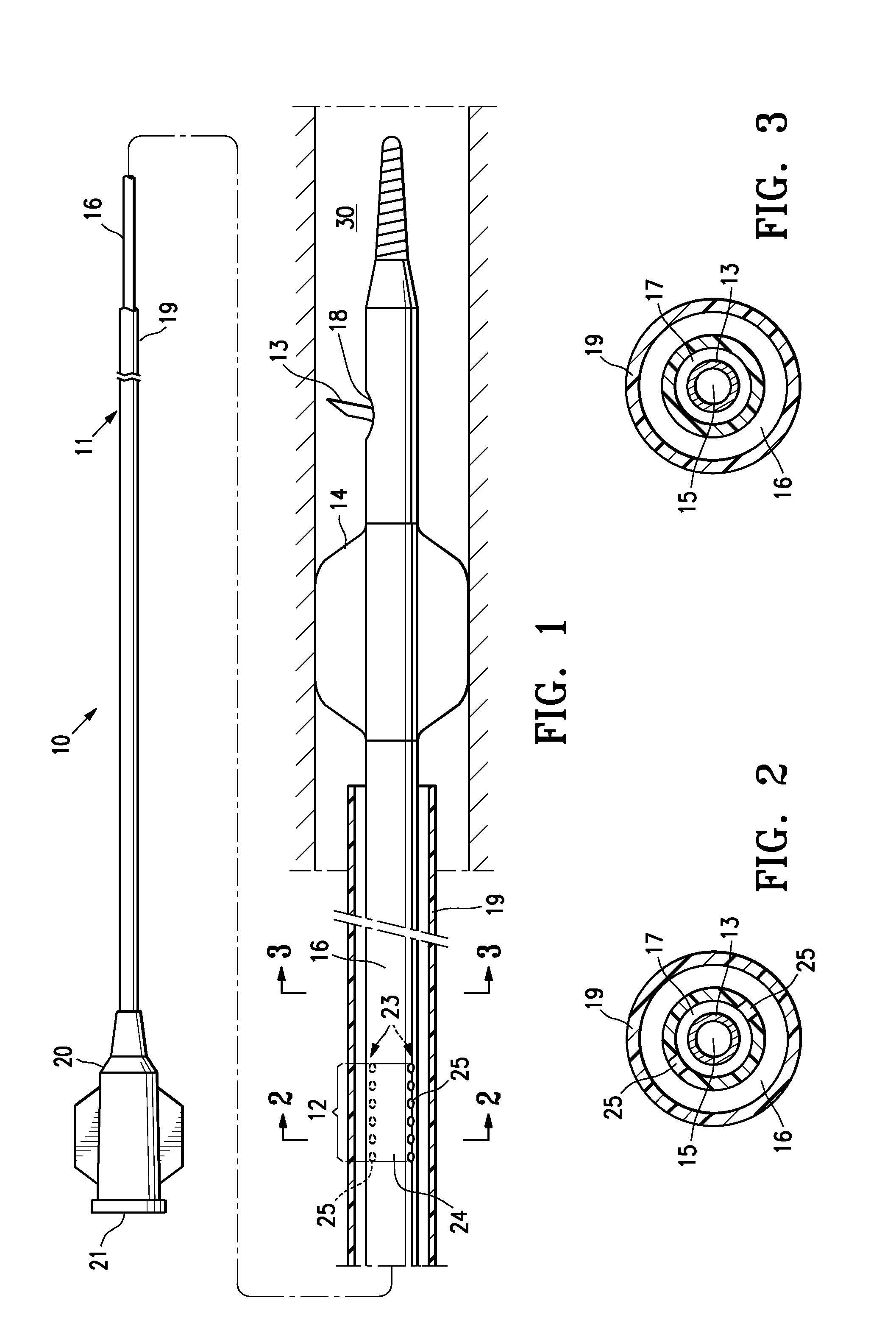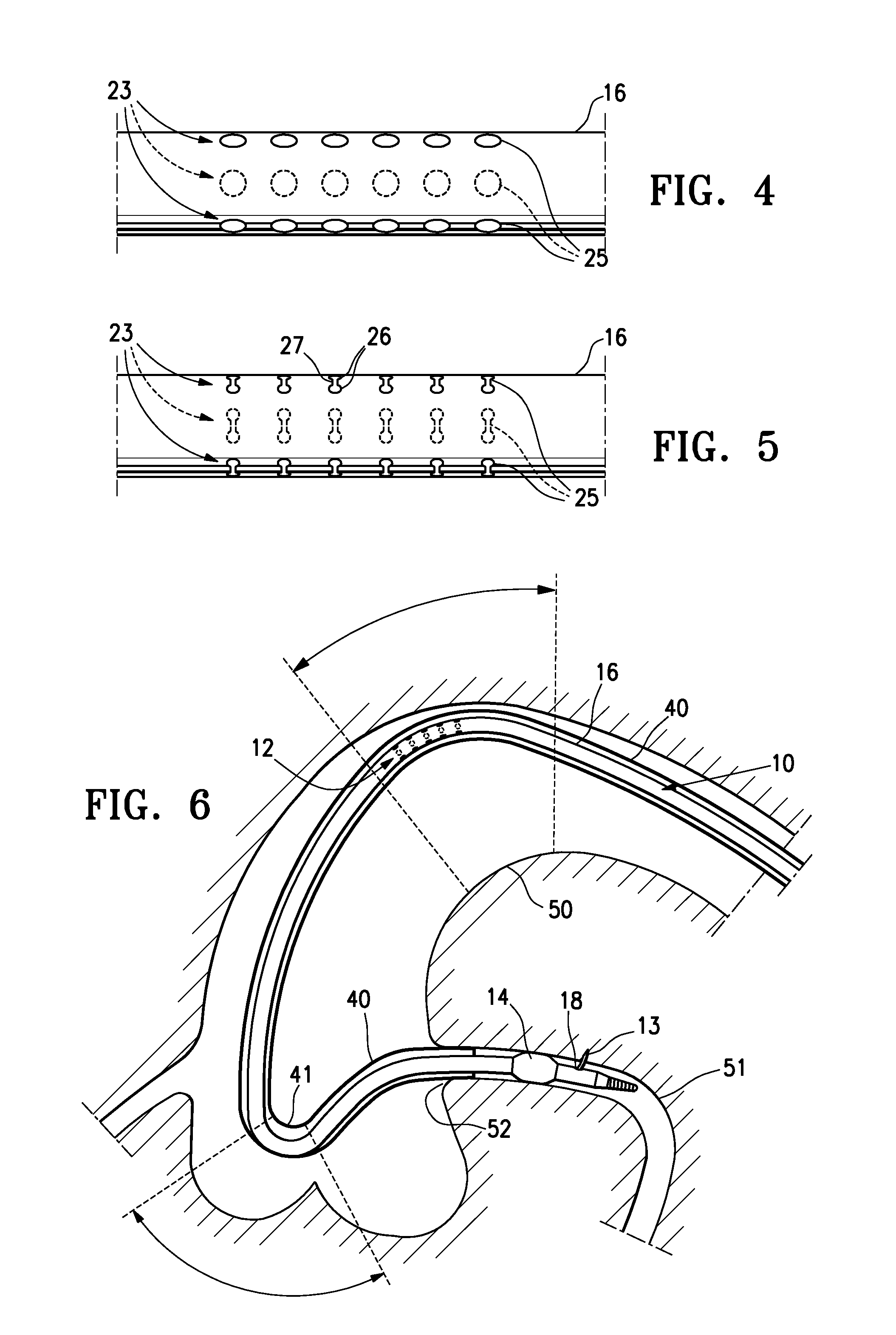Catheter configured for incremental rotation
a catheter and incremental rotation technology, applied in the field of catheters, can solve the problems of difficult or impossible to accurately control the distal rotational orientation of the device, the catheter shaft to exhibit wind-up, and the inability to accurately orient the distal end of the catheter at equally spaced rotational intervals, so as to achieve the effect of increasing the precision of the rotational incremen
- Summary
- Abstract
- Description
- Claims
- Application Information
AI Technical Summary
Benefits of technology
Problems solved by technology
Method used
Image
Examples
Embodiment Construction
[0021]FIG. 1 is an elevational, partially in section, view of a catheter 10 embodying features of the invention, generally comprising an elongated tubular shaft 11 having a proximal end, a distal end, and incremental rotation inducing features 12 in a wall of the shaft 11. The catheter 10 is a needle catheter having a needle 13 which is slidably disposed in the shaft 11 and which reversibly extends from the shaft in an extended configuration. In the illustrated embodiment, the needle catheter 10 further includes a radially expandable member 14 mounted on a distal shaft section. The radially expandable member 14 is configured to expand against the inner surface of the patient's body lumen 30, to thereby temporarily center and stabilize the location of the catheter in the body lumen 30. A variety of suitable radially expandable members 14 can be used including open-walled cages or inflatable balloons. In an embodiment in which the expandable member 14 is a balloon with an inflatable i...
PUM
 Login to View More
Login to View More Abstract
Description
Claims
Application Information
 Login to View More
Login to View More - R&D
- Intellectual Property
- Life Sciences
- Materials
- Tech Scout
- Unparalleled Data Quality
- Higher Quality Content
- 60% Fewer Hallucinations
Browse by: Latest US Patents, China's latest patents, Technical Efficacy Thesaurus, Application Domain, Technology Topic, Popular Technical Reports.
© 2025 PatSnap. All rights reserved.Legal|Privacy policy|Modern Slavery Act Transparency Statement|Sitemap|About US| Contact US: help@patsnap.com



